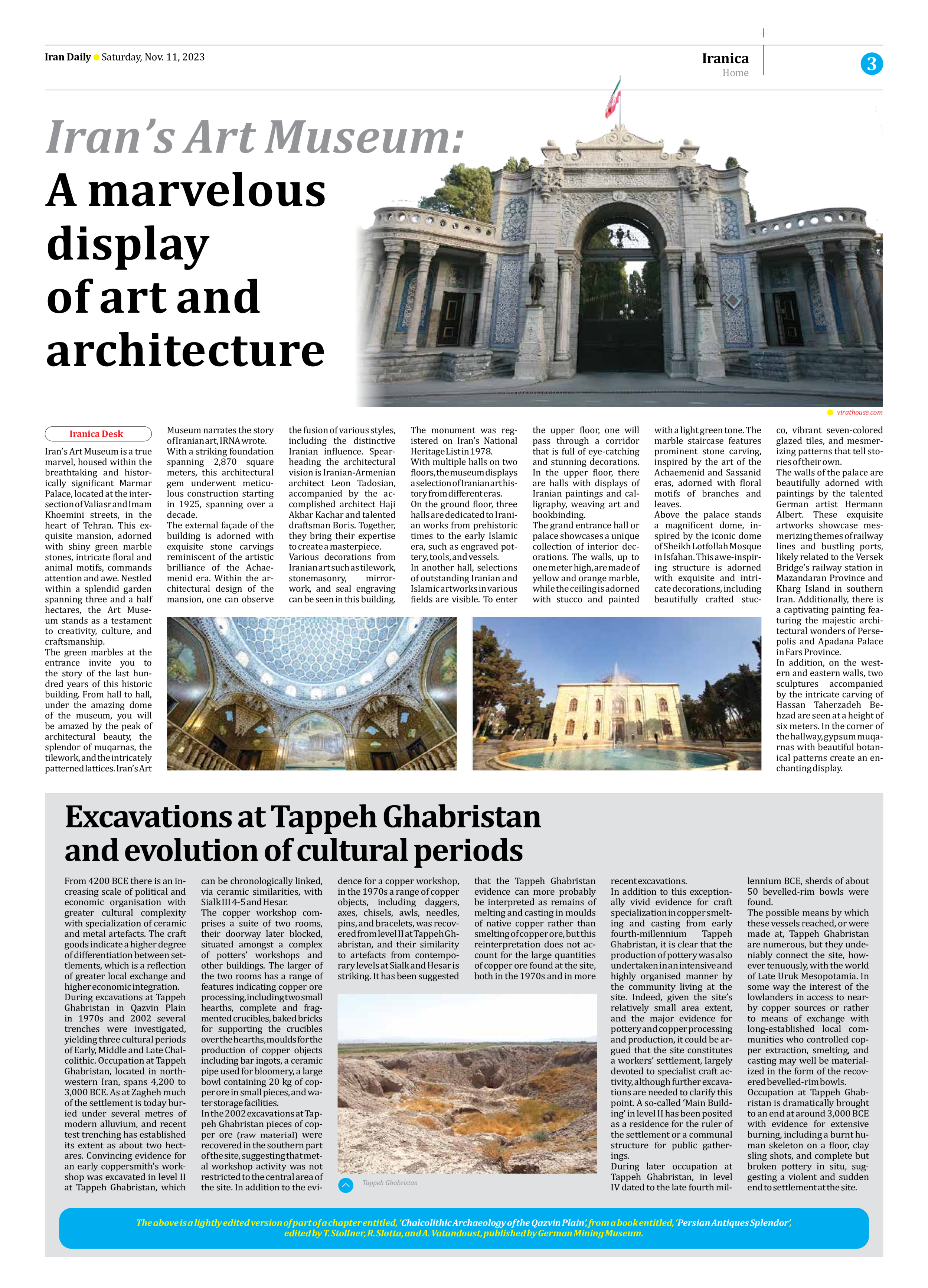
Excavations at Tappeh Ghabristan and evolution of cultural periods
From 4200 BCE there is an increasing scale of political and economic organisation with greater cultural complexity with specialization of ceramic and metal artefacts. The craft goods indicate a higher degree of differentiation between settlements, which is a reflection of greater local exchange and higher economic integration.
During excavations at Tappeh Ghabristan in Qazvin Plain in 1970s and 2002 several trenches were investigated, yielding three cultural periods of Early, Middle and Late Chalcolithic. Occupation at Tappeh Ghabristan, located in northwestern Iran, spans 4,200 to 3,000 BCE. As at Zagheh much of the settlement is today buried under several metres of modern alluvium, and recent test trenching has established its extent as about two hectares. Convincing evidence for an early coppersmith’s workshop was excavated in level II at Tappeh Ghabristan, which can be chronologically linked, via ceramic similarities, with Sialk III 4-5 and Hesar.
The copper workshop comprises a suite of two rooms, their doorway later blocked, situated amongst a complex of potters’ workshops and other buildings. The larger of the two rooms has a range of features indicating copper ore processing, including two small hearths, complete and fragmented crucibles, baked bricks for supporting the crucibles over the hearths, moulds for the production of copper objects including bar ingots, a ceramic pipe used for bloomery, a large bowl containing 20 kg of copper ore in small pieces, and water storage facilities.
In the 2002 excavations at Tappeh Ghabristan pieces of copper ore (raw material) were recovered in the southern part of the site, suggesting that metal workshop activity was not restricted to the central area of the site. In addition to the evidence for a copper workshop, in the 1970s a range of copper objects, including daggers, axes, chisels, awls, needles, pins, and bracelets, was recovered from level II at Tappeh Ghabristan, and their similarity to artefacts from contemporary levels at Sialk and Hesar is striking. It has been suggested that the Tappeh Ghabristan evidence can more probably be interpreted as remains of melting and casting in moulds of native copper rather than smelting of copper ore, but this reinterpretation does not account for the large quantities of copper ore found at the site, both in the 1970s and in more recent excavations.
In addition to this exceptionally vivid evidence for craft specialization in copper smelting and casting from early fourth-millennium Tappeh Ghabristan, it is clear that the production of pottery was also undertaken in an intensive and highly organised manner by the community living at the site. Indeed, given the site’s relatively small area extent, and the major evidence for pottery and copper processing and production, it could be argued that the site constitutes a workers’ settlement, largely devoted to specialist craft activity, although further excavations are needed to clarify this point. A so-called ‘Main Building’ in level II has been posited as a residence for the ruler of the settlement or a communal structure for public gatherings.
During later occupation at Tappeh Ghabristan, in level IV dated to the late fourth millennium BCE, sherds of about 50 bevelled-rim bowls were found.
The possible means by which these vessels reached, or were made at, Tappeh Ghabristan are numerous, but they undeniably connect the site, however tenuously, with the world of Late Uruk Mesopotamia. In some way the interest of the lowlanders in access to nearby copper sources or rather to means of exchange with long-established local communities who controlled copper extraction, smelting, and casting may well be materialized in the form of the recovered bevelled-rim bowls.
Occupation at Tappeh Ghabristan is dramatically brought to an end at around 3,000 BCE with evidence for extensive burning, including a burnt human skeleton on a floor, clay sling shots, and complete but broken pottery in situ, suggesting a violent and sudden end to settlement at the site.
The above is a lightly edited version of part of a chapter entitled, ‘Chalcolithic Archaeology of the Qazvin Plain’, from a book entitled, ‘Persian Antiques Splendor’,
edited by T. Stollner, R. Slotta, and A. Vatandoust, published by German Mining Museum.







